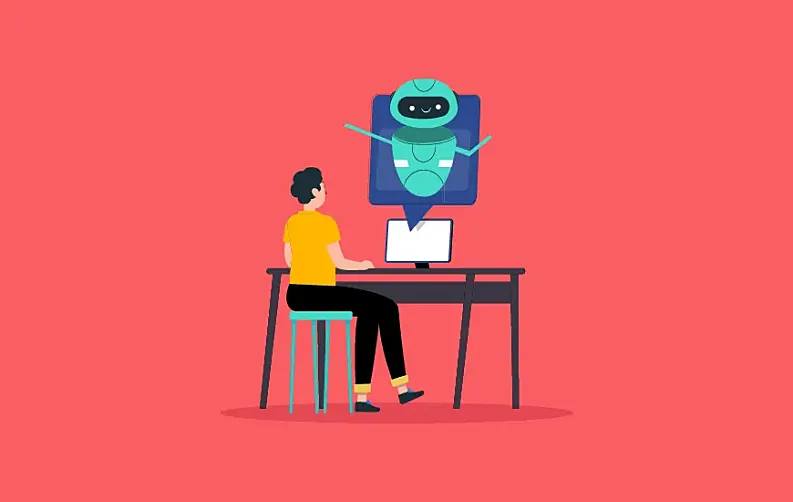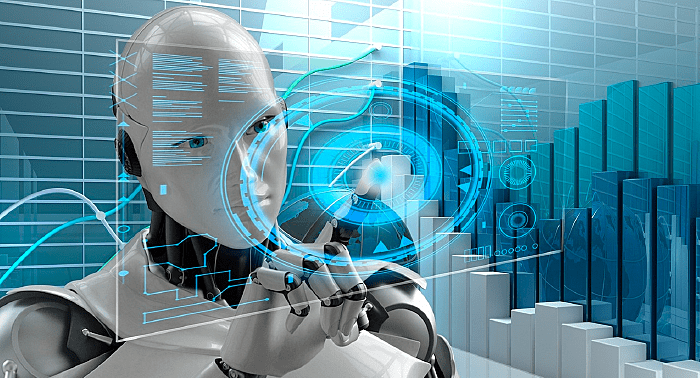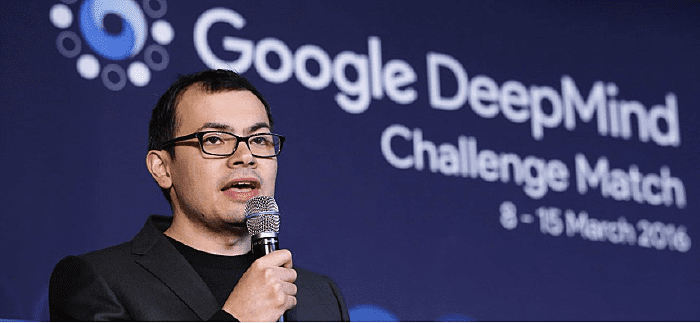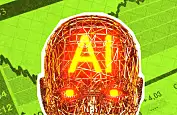
- Types of AI: Based on Capabilities
- Artificial General Intelligence
- Benefits of General Artificial Intelligence
- Artificial SuperIntelligence
- Types of AI: Based on Learning and Memory!
- Strategic Considerations for Adoption of AI Systems in 2024!
- Challenges and Opportunities Associated with AI Adoption for Business Applications
- Future Trends of AI in 2024
- Recommendations for Decision-Makers
- Conclusion

The concept of AI has always been a fascinating one. Since its inception to date, the domain of AI has compounded its capabilities. However, from basic weak AI to expert systems, there are many interpretations that range from implementable AIs to AI concepts.
This creates a lot of confusion with different AI technologies (machine learning, deep learning, etc.) with different types of AI. Also, from an implementation perspective, it is important to steer clear of this confusion. Therefore, for further clarity, we have covered all the major types of artificial intelligence. Furthermore, we have mentioned business critical considerations, challenges, and trends.
Types of AI: Based on Capabilities
Understanding AI and its types can essentially be divided into two categories. This category deals with different types of artificial intelligence with examples to help you understand the capabilities of each. So, these are the AI types that fall under this category:
Artificial Narrow Intelligence
Often referred to as “Weak AI” or “Narrow AI,” artificial narrow intelligence (ANI) is great for performing a single task. Unlike the different types of artificial intelligence, this one is specific in nature and oesn’t try to mimic human intelligence. Instead, it is completely focused on a single task. In fact, the majority of AI-integrated systems today make use of this type of AI.
Examples of Artificial Narrow Intelligence
Facial Recognition System: This system is used by smartphone companies and companies like Google and Facebook to detect people in pictures.
Chatbots: Some of the most common examples of chatbots or virtual assistants that use ANI are Siri, Google Assistant, Alexa, etc.
Self-driving Vehicles: Tesla Cars are one of the most popular examples of ANI. Furthermore, this particular technology is also being used in drones, boats, factory robots, etc.
Predictive Maintenance: This is used to predict the systems that can fail or which might prolong. Some common examples are building management, manufacturing monitoring, oil analysis, etc.
Recommendation engine: The common example of this application are streaming platforms like Netflix, Amazon Prime, Hulu, etc.
Limitations of Artificial Narrow Intelligence
- Narrow AI can only perform simple problems and can not be included in complex reasoning.
- These systems require large datasets to perform accurately.
- It can be difficult to interpret narrow AI.
Artificial General Intelligence

Artificial general intelligence is a hypothetical concept that aims to achieve the consciousness level of the human mind. In terms of sentience and capability, it is much closer to self-aware AI.
Unlike the categories of AI, this type of artificial intelligence won’t be dependent on rule-based principles. Instead, it will be capable of learning from its own environment and designing its own way of understanding just like humans.
Right now, this AI type doesn’t exist. However, we have weaker AIs that are capable of handling complicated tasks with much ease. For example, Watson, ChatGPT, Bing AI, etc.
Benefits of General Artificial Intelligence
- Capability to solve complex problems without human intrusion.
- High level of automation across industries.
- It can help humans in providing answers to complex queries.
Artificial SuperIntelligence
Nick Bostrom of the University of Oxford defines superintelligence as, “any intellect that greatly exceeds the cognitive performance of humans in virtually all domains of interest”.
As of now, this type of AI is another hypothetical concept. However, it has been an inspiration for multiple sci-fi movies.
Some of the most popular AI superintelligence systems are:
- Skynet (Terminator)
- Ultron (Marvel)
- HAL 9000 (2001: Space Odessey)
Types of AI: Based on Learning and Memory!
There are several types of AI systems that are based on learning and memory. To further extrapolate, these are the different types:
1. Reactive AI
Reactive AI is a subset of artificial intelligence. This type of AI that reacts and responds to the input it consumes from the sensors and takes actions based on it. Unlike any other, these smarter types of AI systems, these that are based on rule-based principles.
Reactive AI doesn’t have any memory, therefore, it doesn’t have the capability of learning from its past experiences. It only responds in the manner it has been trained for.
A common example that is often given in the realm of reactive AI is IBM’s Deep Blue. This system defeated the chess grandmaster Gary Kasparov. The team behind the development of Deep Blue doubled the number of chess chips used for enhancement. This gave the reactive AI to predict 100 to 200 million moves per move made by Gary Kasparov. This was a defining moment of AI and is often included within the history of AI development with golden words.
Below is the famous video where Gary Kasparov resigns to IBM’s Deep Blue during the gameplay:

Some other examples of Reactive AI are:
- AlphaGO, a computer program developed to play the board game GO developed by DeepMind (a company backed by Google)
- Self-driving cars by Tesla
- Spam filters used for detecting spam emails.
How Reactive AI works?
Here are the steps behind the working principle of Reactive AI. Let’s go through them one by one:
Note: The process defined below explains the working principle of Deep Blue.
Step 1: In this step, a commander is established. This commander analyzes the entire board to figure out patterns. Patterns like the position of the Chessman, the alive chessman of deep blue, and different positions to play on the grid.
Step 2: At the second level, a consultant comes into play to provide a general solution and alarms the system for any incoming situation.
Step 3: The commander takes the hint from the consultant and weighs the level of the situation, thereby taking the best possible action.
Step 4: These hints are used by a third entity as the micromanager and who turns them into actual commands.
Adding to it, a reactive plan can be constructed in several ways. Let's have a look at them, too, down below.
Different Types of Reactive Plans
- Condition-Action Rules: This approach works on If-Else conditions. If the conditions are fulfilled then the step is taken, otherwise, reverted.
- Finite State Machines: This approach works on determining the state of the agent. The state of the agent changes at each level to determine the best action possible whenever a condition is fulfilled.
- Fuzzy Approaches: It is the combination of the above two approaches. As per this, condition, action, and states are nothing but boolean quantities of “0 or 1” or “Yes or No.”
- Connectionist Approaches: In this, multiple units are connected in an artificial neural network. Each unit is subjected to an abstract activity that induces a behavior into another unit. The unit that induces an activity is known as an activity inducer.
Limited Memory
Limited memory AI is an AI type that stores its previous experiences and data in its memory. Based on that, it derives better insights, predictions, and actions. A limited memory AI uses ML technology to learn and evolve complex tasks.
Several different kinds of AI technologies utilize limited memory. These are:
- Long Short-term Memory: This type of AI is used has an artificial neural network. This AI type not only feeds on a single data point rather it feed the entire dataset. This makes it capable of predicting what should come next.
- Reinforcement Learning: In this method, limited memory is used by the system for trial and error. Upon different iterations an AI model, it generates insights that are collected by the limited memory . This makes the AI model robust and dependable.
- E-GAN (Evolutionary Generative Adversarial Network): This type of AI model works on the principle of mutation. Therefore, this technique helps an AI model to evolve with every cycle and become better with time.
Some examples of this category of AI are:
- Autonomous Vehicles
- Recommendation Engines
- Prediction Models
2. Theory of Mind
The AI that follows the principle of the Theory of Mind is identical to the theory of mind used in psychology itself. As per psychology, the theory of mind deals with attributing different mental states such as thoughts, beliefs, intent, perception, etc.
Likewise, Theory of Mind AI is designed to understand the mental state of the user, i.e., his/her beliefs, intentions, emotions, desires, etc. This type of AI is already in development and has huge potential to transform the way we interact with computers.
It utilizes various AI techniques, such as natural language processing, machine learning, and computer vision. The intention behind the creation of this AI is to understand the meaning behind human language and not simply mimic it.
For this, machine learning is used to understand the data to improve its performance with time. Adding to it, the technology also requires computer vision to make meaning out of what the system perceives from the input data.
Potential Applications of Theory of Mind
Virtual Assistants: It can be used for creating virtual assistants that are as intuitive as a human.
These virtual assistants will surpasses the capabilities of ChatGPT by tenfold. The application can also be great for psychological support.
Robotic Interactions: It will help in creating robots that will have almost human-like interaction capabilities.
Remote Education via AI: The only thing in which remote education via presentations lags behind is an intuitive teacher.
Remote Education via AI: The only thing in which remote education via presentations lags behind is an intuitive teacher. There are multiple Edutech companies that have access to phenomenal teachers. However, an AI-based one can be tweaked to make it more interesting.
However, the Theory of Mind is still a hypothetical concept because of the following constraints such as:
- Data: It would require tonnes of data to learn which can be difficult and expensive to collect.
- Complexity: Creating human-like behavior via an algorithm is a complex task and isn’t possible as of today.
- Interpretability: For TOM (Theory of Mind) AI to truly behave like a human, it needs to understand humans at a subconscious level. This becomes almost impossible in today’s time, considering there isn’t any technology available to comprehend this task.
It would still take some time to turn TOM into reality. However, it is a promising technology with a much wider range of applications technologies out there.
3. Self Aware AI

"Philosophers haven't really settled on a definition of consciousness yet," he said, "but if we mean self-awareness, and these kinds of things... I think there's a possibility that AI could one day be." says the CEO of DeepMind (backed by Google) as stated in a Futurism article.
Out of all the different types of AI, a Self Aware AI would be one that would be aware of its own existence. The CEO of DeepMind has said it so well that philosophers are struggling to find consciousness, the possibility of AI becoming sentient one day is nothing short of a miracle.
Although, if we see through the filters of reality, it is a far-fetched hypothetical concept that isn’t possible with what we have today. On the contrary, there are research projects by OpenAI (the creators of ChatGPT), AI project in Consciousness and Self Awareness Lab at the University of Sussex, Project Alexandria by Allen Institute for Artificial Intelligence, etc. that are working to achieve it.
Key Components of Self-Aware AI
Out of all the different types of artificial intelligence systems in order to become a self-aware AI, the developed system needs to have several attributes that are mentioned below:
Consciousness
The machine needs to be aware of its own consciousness. Being conscious means having the capability to introspect queries, responses, thoughts, beliefs, etc., and derive an answer from them.
Consciousness is the capability to perceive information from the external world and process it internally. For humans, it is by virtue of the brain that we feel conscious. To a certain degree to it won’t be wrong to describe it as feeling alive.
Right now, there are only two methods that are established in order to create something like that:
- The first would be to use Integrated Information Theory. It is a framework for understanding how a certain system feels conscious and ultimately goes back to the biology of things.
- The second would be to create a neural network as dense as that of a human brain and leave it to develop for different experiences to finally attain consciousness.
Self-Identity
The striking feature of human consciousness is to self-identify itself. If we look at our own reflection, we are able to understand that the person standing is me. In fact, even if we are standing with a bunch of people, the story is the same.
In order for this AI types to be truly Self Aware, it is first required to identify itself in different conditions. This seems like an easy task from a human perspective but creating something like that truly identifies itself would be one of the biggest breakthroughs, both in technological and philosophical senses.
Capability of Expressing Emotions and Motivation
Showing and understanding emotions, and feeling motivated to do something is another key aspect that makes us human. The capability to feel emotions is what often determines us from machines. It is important to take it into consideration because the majority of the time humans take actions or reach an understanding via expressing emotions. Also, it is the motivation that compels us to achieve a task.
There can be several potential benefits of developing a Self Aware AI which are:
- Collaboration between self-aware AI and humans to innovate new things and solve novel problems
- Self Aware AI can contribute in terms of creative tasks such as painting, creating art pieces, and creative writing, and can contribute even in the field of science & technology.
- A self-aware AI will be able to help us in advisory and decision-making in various facets of knowledge and experience.
However, there are some potential implications too such as:
- It could lose control
- It can have a superiority complex
- It could malfunction and become dangerous
- It can be used for malicious purposes as it can be manipulated just like humans
Strategic Considerations for Adoption of AI Systems in 2024!
Aside from understanding the different artificial intelligence types, it is essential for established companies and startups to consider strategic considerations. This would enable a smooth transition to an AI infrastructure and would help in the following ways:
- Automation of work
- Optimization of workflow
- Enhancement of operational efficiency
- Improvement in customer experience.
- Developing innovative business models, etc.
Strategic considerations for businesses involve the integration of AI for impact (in multiple ways). They could help a company potentially align business objectives and address implementation challenges.
Therefore, we have mentioned some strategic considerations to guide businesses in their AI adoption journey.
1. Identify High-Impact Use Cases
It is essential to focus on the potential benefits of AI and what it can do for your company. This could range from automating tasks to enabling advanced analytics for decision-making.
In fact, Salesforce uses AI with its CRM platform, ‘Einstein.’ They analyze sales data, predict customer behaviors, and even automate repetitive tasks using the tool. This has significantly improved the efficiency of sales and customer service for Salesforce.
2. Data Quality and Accessibility
As per a review by MIT Sloan Management, around 85% of executives believe that AI integration will allow their companies to obtain or sustain a competitive advantage. However, the quality of the data fed remains a significant barrier in terms of application.
Almost all types of AI models require high-quality and relevant data, whether B2B or B2C. This data is known as labeled data which is used to train AI models. Based on this data, different AI model types make decisions and provide insights.
For example, Siemens uses its AI model to analyze data from their IoT platform ‘MindSphere’. By doing this, they could optimize operations, and maintenance, and reduce energy consumption for their clients.
3. Skills and Talent Acquisition
The history of AI goes back centuries if we start to include the literature that mentions similar entities. However, there are currently several artificial intelligence companies, and one needs to select the best.
Investing in AI talent or partnering with providers who understand its ropes is essential. This is because AI development and deployment require specialized skills.
In fact, Gartner predicts that by 2024 about 75% of organizations will at least pilot an operational AI.
A great example is the partnership between ‘IBM’ and ‘Box.’ Box used Watson AI (an IBM product) to analyze and classify the documents stored in their tool. With this integration, they enhanced content management and collaboration for businesses.
4. Regulatory Compliance and Ethics
In 2024, AI ethics and regulatory compliance will become increasingly important. AI technologies are affecting multiple aspects of our personal and professional lives. This rapid advancement and adoption of AI technologies prompt government bodies to make more comprehensive regulatory frameworks. Therefore, it is important for businesses to consider AI ethics and stay aligned with regulatory compliances.
Some attributes related to this aspect are:
- Different regions have adopted different approaches to AI regulation. For example, the European Union categorizes these types of AI systems according to their risk levels.
- Additional layers of AI-related regulations are being added in certain industries such as healthcare, finance, etc.
- Organizations like IEEE, OECD, and other national bodies have published guidelines for AI.
- There is a growing emphasis on developing and implementing AI audit frameworks.
- Data protection laws like GDPR in Europe, CCPA in California, etc., have set standards for AI systems for processing personal data, consent, transparency, and right to explanation.
- Increasing demand for AI systems to be more explainable, enabling developers and regulators to understand AI models.
- There is a push towards international cooperation and harmonization of AI regulations.
A great example of this would be the tool developed by Accenture, which is an AI-based compliance tool. Banks can use this tool which can help automate the monitoring of transactions.
5.Scalability and Integration
One of the most important aspects of any further IT development today is scalability. User data is expanding every year, so it becomes essential to upgrade to systems that are scalable in nature. This norm should be followed with AI solutions because most of these systems use customer data to provide insights, predictive analytics, etc.
For example, KONE is a company that specializes in elevators and escalators. They utilized IBM Watson’s AI to predict maintenance needs and optimize service schedules.
6. Strategic Partnerships
There are several AI development companies out there that are using different types of AI models for different types of work. Therefore, it is important to share technology and expertise to grow further. Forming strategic partnerships with AI technology will help accelerate development and find solutions faster.
GE Healthcare partnered with NVIDIA to accelerate its processes. Processes like improving diagnostic accuracy, medical imaging data, and patient care.
7. Measuring ROIs
Implementing AI and checking its efficacy post-integration are two different things. It is important to establish clear metrics to measure its return on investment.
This would help bridge gaps, focus on improvements, improve customer satisfaction, and boost revenue. In fact, PwC has decided to contribute up to $15.7 trillion by 2030. This decision is made primarily to improve productivity and personalization.
Challenges and Opportunities Associated with AI Adoption for Business Applications
AI adoption for businesses presents exciting opportunities and significant challenges. Let’s take a look at both:
Challenges
- Several types of AI technologies that require massive amounts of high-quality labeled data (training data), which is not readily available.
- Finding and retaining talented professionals who can build and understand models is difficult and expensive.
- Implementing different types of AI models can be costly and doesn’t always present a clear picture of ROI.
- There are ethical considerations as AI systems are susceptible to bias and can lead to discriminatory or unfair outcomes.
- Introducing AI requires organizational changes and potential resistance from the employees.
Opportunities
- AI systems can help automate repetitive tasks, analyze vast amounts of data, and optimize processes.
- AI-powered chatbots can provide personalized recommendations and predictive maintenance.
- AI systems can help businesses develop new products and services, discover new markets, and help stay ahead of the competition.
- AI can analyze complex data to produce actionable insights and recommendations for better business decisions.
- Early adopters will gain a sufficient competitive edge to stay ahead and improve their operations and offerings.
Future Trends of AI in 2024
The future of AI is fascinating. This is especially true with the latest addition to the AI realm, i.e., Generative AI. However, the future holds more, and several trends will see more light this year. Therefore, here are the trends to know about in 2024 from a business perspective:
1. Hyper-Personalized Interactions
One of the key advantages of AI is the hyper-personalization it offers for consumers. This hyper-personalization involves analyzing buying patterns, competitor intelligence, and social media. Using different types of AI technologies, we can tailor offers, pricing of the productions, and even the communication style.
Here are some stats to showcase the rising interest in the hyper-personalization trend:
- 77% of companies are personalizing their B2B experience to increase market share.
- About 63% of marketers claim that including personalization can improve conversion rates.
- Personalization can reduce acquisition costs by 50%.
- 80% of buyers are likely to do business with companies that personalize their experience.
2. Democratization of AI
AI won't be reserved for tech giants anymore. User-friendly, cloud-based AI tools will empower SMEs to leverage AI for tasks like predictive analytics, sales forecasting, and risk assessment. This will level the playing field and create new opportunities for innovative startups.
We have multiple open-source AI tools like TensorFlow, Keras, Scikit-learn, etc., that are catapulting the growth of AI systems. Furthermore, there are several user-friendly cloud-based AI tools that can empower SMEs.
This will make AI services accessible to SMEs without actually adopting in-house AI systems for the infrastructure. The utilization of cloud-based AI systems will be done for tasks like predictive analytics, sales forecasting, and risk assessment. Further, democratization will even the playing field and create opportunities for startups with innovative ideas.
Here are some factors that show the increasing interest and imminent need for the democratization of AI are:
- A report suggests that 35% of companies are using AI while 42% are thinking of implementing it.
- About 80% of executives think that automation can be applied to any business decision.
- There are multiple pre-built cloud-based AI platforms and tools getting released that are addressing challenges related to AI adoption.
AI-Powered Collaboration and Negotiation
The most impressive thing about any AI system is that it can simplify and automate any workflow. AI will facilitate smoother collaboration between teams and across organizations. Several intelligent assistants are capable of managing schedules, translating languages, and summarizing complex documents.
Several AI-driven negotiation tools analyze data and suggest optimal strategies. This ensures that the outcome is a win-win, saving time and resources. For example, Pactum, CatalystGo, Zoom.ai.
The Rise of “Industry Clouds” with Embedded AI
Industry Clouds are specialized cloud computing platforms designed to cater to specific needs and challenges. They are different from traditional general-purpose cloud platforms in several ways:
- They offer focused functionalities with pre-built tools, applications, and tailored services.
- These cloud systems have deep knowledge and experience in the industries they serve.
- These cloud systems make use of industry-specific compliance and security standards. This helps businesses mitigate risks and manage sensitive data.
- Industry cloud systems can help in research and tailored development as per the industry’s requirements.
The industry-specific cloud platforms will help integrate AI capabilities directly to the end customer. This can help spread the power of AI that enables streamlined workflows, improved efficiency, and acceleration in overall research.
AI-Driven Talent Management and Reskilling
With AI taking up all the mundane, repetitive tasks and automating them, the shift will focus on human creativity, problem-solving, and strategic thinking. AI has the potential to manage talent, identify potential candidates, personalize training, and a lot more.
The integration of AI in talent management will ensure that the companies recruit the right candidates for the right job. Furthermore, AI-based skilling will increase the understanding of concepts within candidates.
To further showcase the grip of this trend in the current market, here are some stats:
- Organizations that are using AI have seen a 50% reduction in time to hire a candidate.
- About 79% of employees use AI or automation tools to recruit and select the best talent.
- Over 92% HR leaders stated that they are going ahead with AI in at least one major area.
Recommendations for Decision-Makers
Being a decision-maker can be overwhelming. The involvement of AI in our work is relatively very new. However, as a decision-maker, one needs to ensure that their decisions don’t hamper the company’s growth.
Therefore, here are some basic tips for successful AI adoption:
- Focus on specific use cases with a clear vision of potential ROI.
- Make investments toward data quality and infrastructure.
- Build a team with the necessary AI experience and expertise or partner with any AI development company.
- Be proactive while considering transparency in AI implementation.
- Communicate the benefits of using AI to the employees and how it will help them.
- Monitor and evaluate AI initiatives.
Conclusion
Till its inception, there have been several iterations in the types of AI. However, the things that fascinate people around the topic of AI are still hypothetical. Multiple companies like OpenAI, DeepMind, etc. are constantly trying to blur the boundaries between AI and human intelligence. However, it would be interesting to see when it becomes a reality.
Frequently Asked Questions
-
What is the most common type of AI used today?
-
What are the different types of AI?
-
What are the different types of Generative AI?
-
What are the different types of conversational AI?
-
What are the different types of artificial intelligence algorithms?



















